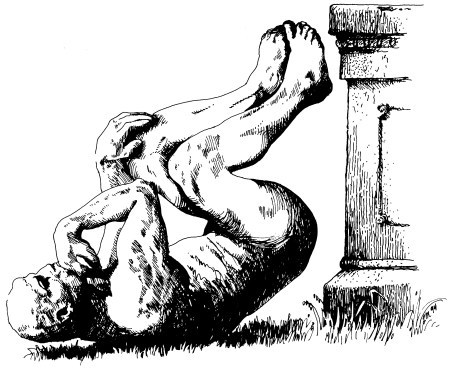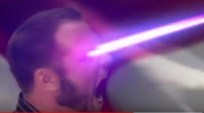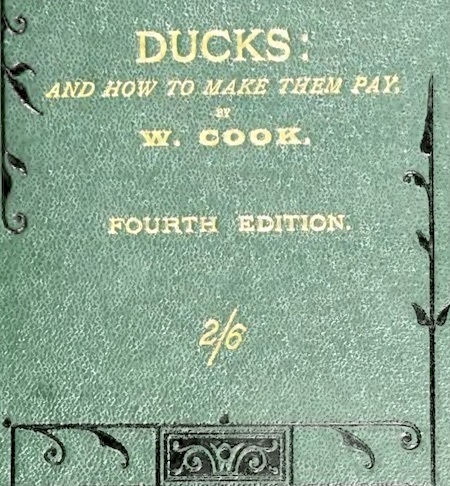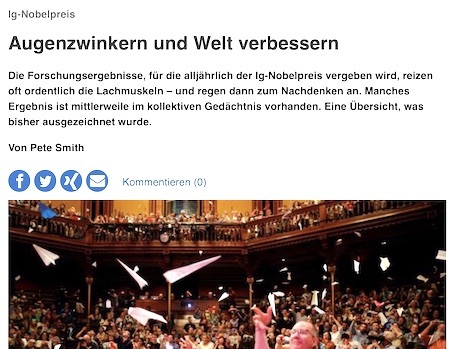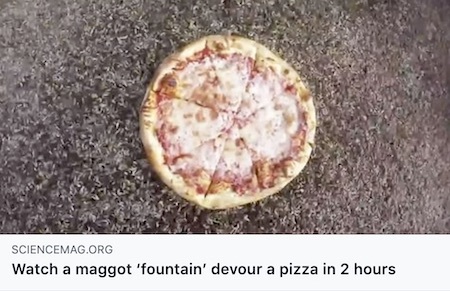Marc Abrahams's Blog, page 157
February 16, 2019
Improbable Research tonight in Washington, DC
Join us tonight at the Improbable Research show at the AAAS Annual Meeting, Omni Shoreham Hotel (in the Diplomat Ballroom), Washington DC—The annual Improbable Research session will include:
Marc Abrahams , founder of the Ig Nobel Prize ceremony
Ig Nobel Prize winner David Wartinger (using roller coaster rides to try to hasten the passage of kidney stones)
Ig Nobel Prize winner Abigail Baird (fMRI discovery of brain activity in a dead salmon)
The Dunning-Kruger Song
Ig Nobel Prize winner Nathaniel Barr (“On the Reception and Detection of Pseudo-Profound Bullshit“)
Marguerite E. Matherne (how effective is tail-swishing in large animals?)
Eric Schulman (A history of the universe in 100 words, in Czech)
Olga Shishkov (the biomechanics of maggots)
and maybe other people and things
This session is open free to the public. Bring friends (seating is limited—arrive early if you want a seat) #AAASmtg

February 15, 2019
Hows and Whys of There’s a Fly in My Wine
Alex Dainis explains videographically the inner workings of the Ig Nobel Prize-winning experiment that demonstrates some people’s ability to tell—by smelling!—whether there was a fly in a glass of wine:
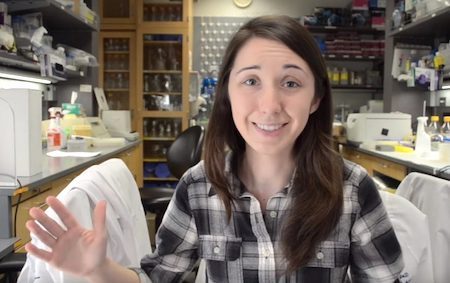
The people-can-sniff-out-a-fly study
The published study is: “The Scent of the Fly,” Paul G. Becher, Sebastien Lebreton, Erika A. Wallin, Erik Hedenstrom, Felipe Borrero-Echeverry, Marie Bengtsson, Volker Jorger, and Peter Witzgall, bioRxiv, no. 20637, 2017.
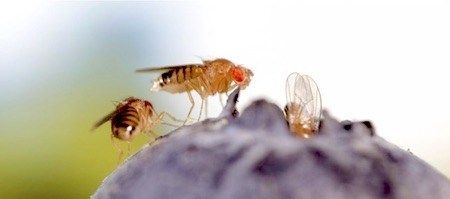
A fly-by-day public demonstration, in April
The study authors, who shared the 2018 Ig Nobel Prize in biology, will themselves publicly demonstrate their work twice—at the Karolinska Institute on Tuesday, April 9, and at Stockholm University on Wednesday, April 10—as part of this year’s Ig Nobel EuroTour.
Come see them, and talk with them, and smell the fly!

February 14, 2019
Eye-beam believers – numbers perhaps not as high as previously thought (new study)
Their research suggests that the figure could now be as low as 5% – falling from around 50% in 2002. This order-of-magnitude drop is not easily explained say the research team.
“Our finding of an ∼5% incidence of extramission beliefs conflicts with previous work suggesting that more than half of US adults, possibly as high as 60 to 70%, explicitly believe in an extramission account. We cannot easily explain this difference. It is possible that education about optics has significantly improved since the 1990s. Another possibility is that our sample was skewed, since it included only participants who could sign up for an online service and complete the study on a computer.”
See: Implicit model of other people’s visual attention as an invisible, force-carrying beam projecting from the eyes in PNAS January 2, 2019 116 (1) 328-333.
The photo is a still taken from a video by Wyatt Scott who ran for parliament as an independent candidate for Mission Matsqui Fraser Canyon, Canada.

February 13, 2019
Family Name Frequency and Abundance of the Chemical Elements?
by E. R. Schulman and E. A. Schulman, Alexandria, Virginia
Abstract
Yes (provided radioactive gasses are ignored).
1. Introduction
This year (2019) marks the 150th anniversary of Dmitri Mendeleev publishing the first recognizable periodic table in his paper “Relationship of Elements’ Properties to Their Atomic Weights” (Mendeleev 1869), the 20th anniversary of AIR publishing “How to Write a Scientific Research Report” (Schulman, Cox, and Schulman 1999), and the year before the next United States decennial census. This paper seeks to combine all three in order to answer the often unasked question: Is American last name frequency inversely proportional to terrestrial elemental abundance?
2. Methods
We searched the U.S. Census Bureau’s file of surnames that occurred 100 or more times in the 2010 Census for last names corresponding to the chemical elements and found twelve that did so. Table 1 shows the name and atomic number of each of the elements, the frequency of occurrence in the 2010 U.S. Census, and the elemental abundance in the Earth’s crust for non-gasses and in the Earth’s atmosphere for gasses….
So begins the study. Download .
BONUS: Here are two videos about or by Theo Gray, who won the 2002 Ig Nobel Prize for chemistry for creating the four-legged periodic table table. The first video comes complete with annoying music. The second video comes complete with pleasing music:

February 12, 2019
John Senders has driven off into eternity
Sad news. John Senders has taken his last gleeful spin through the universe. He died this week, just a few days shy of his 99th birthday. John, a clever, funny, kind scientist who was also an ace showman with an astoundingly resonant voice, won the 2011 Ig Nobel Prize for public safety, for conducting a series of safety experiments in which he drove an automobile on a major highway while a visor repeatedly flapped down over his face, blinding him. John is on display doing that in this old TV news report:
The photo here shows John delivering his acceptance speech at the Ig Nobel Prize ceremony. The historic helmet is by his side.
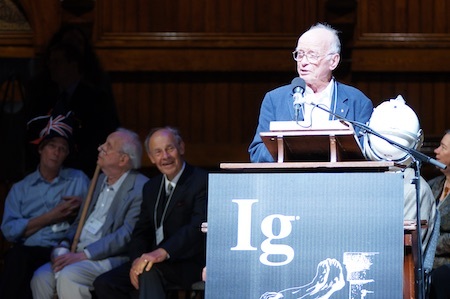
There’s considerably more detail about that driving-the-highways-while-something-repeatedly-flaps-over-your-eyes research, published in the study “The Attentional Demand of Automobile Driving,” John W. Senders, et al., Highway Research Record, vol. 195, 1967, pp. 15-33.
And there was considerably more to John Senders than that one experiment. Dip into the compendium at the John Senders web site. And if you like, read the small essay about John I wrote five years ago, for Beta Boston.
John’s death will in not the slightest impair his clever plan to infect the peoples of the earth with curiosity and a really deep sense of humor.

A Jaundiced View of Ducks and How to Make Them Pay
The book Ducks, and How to Make Them Pay, by William Cook, published by E. Clarke and Sons, in 1890 and later in other editions, is about how to make ducks pay. Cook instructs his fellow humans on how to make money, one way or another, by utilizing ducks one way or another.
A Latter-day, Jaundiced View of Ducks and How to Make Them Pay
Cook’s book was not the last word on the subject. In 2008, long after Cook’s demise, Jonathan M. Thompson wrote an essay about Cook and the ducks, called “The Orpington Ducks.” Thompson finishes his lengthy diatribe with this paragraph:
Over the years, William Henry Cook claims to have been the originator of many varieties of fowls and ducks; only one, however, deserves any credence. He set out to deceive—for whatever reason—and the authors who follow, and unquestioningly repeat what has gone before, also mislead their reader. It is, therefore, little wonder the precise history of this breed and its colour-forms has appeared in an inaccurate state, following on from the primary accounts, when, prior to the writer’s endeavours, no exact investigation of the facts had taken place.
Here is a portrait of Mr. Cook, from his book. Judge for yourself his merits, if you think that looking at at drawing of someone about whom you have just heard is a good way to judge things:

Perhaps no discussion of Mr. Cook can or should duck the responsibility of mentioning the biology research study called “Homosexual Necrophilia in the Mallard Duck,” and perhaps no discussion of that study can exceed in merit the TED Talk given by its author, Kees Moeliker:
As you likely know, Moeliker was awarded the 2003 Ig Nobel Prize for biology, for this work.

February 11, 2019
Sports Celebration Injuries – update
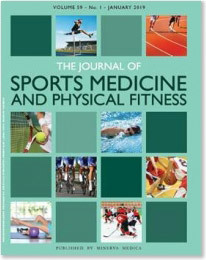 If you thought that ‘Score Celebration Injuries’ (SCIs) were restricted to soccer players – think again. A 2017 report in The Journal of Sports Medicine and Physical Fitness, 57(3 ): 267-71, reviews the medical literature on the subject, reporting that of the 62 SCIs that they found, only 22 involved professional soccer players.
If you thought that ‘Score Celebration Injuries’ (SCIs) were restricted to soccer players – think again. A 2017 report in The Journal of Sports Medicine and Physical Fitness, 57(3 ): 267-71, reviews the medical literature on the subject, reporting that of the 62 SCIs that they found, only 22 involved professional soccer players.
“A total of 62 athletes sustained 62 injuries resulting from various types of celebrations. All but two athletes were males, and the average age was 26.5 years old. […] Common celebration maneuvers included leaping into the air, pile ups, sliding, and somersaults.”
The authors, therefore, give a recommendation :
“By encouraging athletes to temper excessive celebrations and prohibiting certain types of celebrations, many injuries may be prevented.”
See: When celebrations go wrong: a case series of injuries after celebrating in sports
Further reading : A 2011 report from Golf.com recounts the occasion when :
“Thomas Levet’s exuberant celebration of jumping into a lake after winning his home tournament in France last weekend has cost him a place in the British Open.”

February 10, 2019
In-depth examination of the Ig Nobel Prizes, for German doctors
Ärtze Zeitung, the German newspaper for doctors, has a loving, long appreciation of the Ig Nobel Prizes. It begins [here translated into English]:
Winking and improving the world
The research results, for which the Ig Nobel Prize is awarded annually, often tease the laughing muscles – and then make you think. Many results are now available in the collective memory. An overview of what has been awarded so far….
The essay finishes with this:
… The sophistication of the decisions of the Ig Nobel Prize Committee illustrates hardly any work better than the study “From junior to senior Pinocchio” by the Belgian psychologist Evelyne Debey and colleagues, who did not receive the award alone, 1000 liars according to their frequency To have questioned lying, but above all their willingness to “believe their answers”.
Some of Cambridge’s acknowledged findings are now anchored in the collective consciousness. These include insights into Murphy’s Law (1996 and 2003), the exposition of the Dunning Kruger Effect, which states that the difficulty of perceiving one’s own incompetence leads to exaggerated self-assessment (2000), and the related phenomenon that people who believe to be drunk, also believe that they are particularly attractive (2013).
On April 12, 2019, German doctors—and anyone else who is in Berlin that night—will be able to explore firsthand the world of the Ig Nobel Prizes, at the Ig Nobel Night in Berlin event at Tempodrom Berlin. Tickets are available online.

February 9, 2019
Learn how a swarm of maggots eats a pizza, in Washington
Olga Shishkov will discuss (and maybe demonstrate?) how a swarm of maggots eats a pizza, next Saturday night, February 16, at the Improbable Research session at the AAAS Annual Meeting, in Washington, DC.
Science magazine introduces the research: “If you’ve got the stomach for it, you can watch 10,000 maggots demolish the above pizza in 2 hours. Now, scientists have a better sense of how these fly larvae gobble food so quickly, a possible boon for sustainable food production.”
Details are in the newly published study:
“Black soldier fly larvae feed by forming a fountain around food,” Olga Shishkov, Michael Hu, Christopher Johnson, and David L. Hu, Journal of the Royal Society Interface, vol. 16, no. 20180735, 2019. Here’s a snippet from that study:
A single larva is shown in figure 1a. Figure 1b and electronic supplementary material, video S1, show a swarm of larvae consuming a 16-inch pizza in 2 h.
Prior research
David Hu, co-author of the new study (and leader of the lab), shared the 2015 Ig Nobel Prize for physics, for testing the biological principle that nearly all mammals empty their bladders in about 21 seconds (plus or minus 13 seconds).
That urination research is documented in the study “Duration of Urination Does Not Change With Body Size,” Patricia J. Yang, Jonathan Pham, Jerome Choo, and David L. Hu, Proceedings of the National Academy of Sciences, vol. 111 no. 33, August 19, 2014, pp. 11932–11937.
Next Saturday night in Washington: Details
Here’s the lineup of speakers at next week’s Improbable Research show, in Washington:
Marc Abrahams, founder of the Ig Nobel Prize ceremony
Ig Nobel Prize winner David Wartinger (Using roller coaster rides to try to hasten the passage of kidney stones)
Ig Nobel Prize winner Abigail Baird (fMRI discovery of brain activity in a dead salmon)
Ig Nobel Prize winner Nathaniel Barr (“On the Reception and Detection of Pseudo-Profound Bullshit“)
Ig Nobel Prize winner Jiwon (“Jesse”) Han (The physics of walking backwards with a cup of hot coffee)
Marguerite E. Matherne (How effective is tail-swishing in large animals?)
Eric Schulman (A history of the universe in 100 words, in Czech)
Olga Shishkov (The biomechanics of maggots)
It’s at the Omni Shoreham Hotel, in the Diplomat Ballroom, Saturday, February 16, 2019, beginning at 8 pm. This session (unlike most of the AAAS Annual Meeting) is open free to the public. Please join us there!

February 7, 2019
Postulating a mathematical definition of excitement (study)
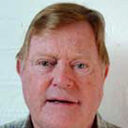 Can there be a mathematical definition of excitement? Within the realm of sports at least (particularly tennis) an attempt has been made to find out. Dr Graham Pollard BSc, MSC, PhD of the Department of Mathematics and Statistics, University of Canberra, Australia, has written, in the Journal of Sports Analytics, regarding ‘Measuring excitement in sportâ€
Can there be a mathematical definition of excitement? Within the realm of sports at least (particularly tennis) an attempt has been made to find out. Dr Graham Pollard BSc, MSC, PhD of the Department of Mathematics and Statistics, University of Canberra, Australia, has written, in the Journal of Sports Analytics, regarding ‘Measuring excitement in sportâ€ .
.
“The mathematical definition of excitement [see full paper link below] is applicable to a wide range of sports scoring systems. Several examples were given, but a major focus of this paper was on a set of tennis. A methodology for determining the average value and variance of the total excitement in the set was outlined. It is reasonably straight forward to use this methodology to determine whether a particular set had a total excitement level that was above or below its expected level, and by how much.â€
It should be noted that the excitement measuring method is not restricted to tennis –
“The method for analyzing excitement […] can be used directly for a wide range of scoring systems as used in racquet sports such as table tennis, squash, and badminton, and other sports such as volleyball.â€
For details , see the Journal of Sports Analytics, 3, (2017) 37–43, where the thesis, and the definition can be read in full. ‘Measuring excitement in sportâ€ .
.

Marc Abrahams's Blog
- Marc Abrahams's profile
- 14 followers


